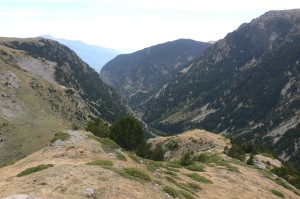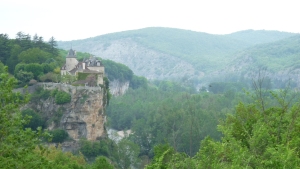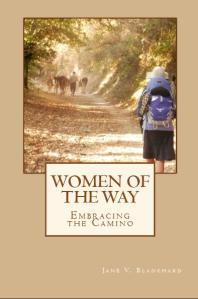When I picked up Women of the Way, Embracing the Camino, I expected a nice little travel log with a couple of descriptions here and there, and maybe a picture or two. That is not to say I expected anything bad of the book (quite opposite, actually). Honestly, I do not usually read travel memoires.
To be honest, reviewing for StreetWraith Press and Bay Side Stories has seen the most memoires that I have ever read. I am even picking up tips for that eventuality when I will write my own.
Writers learn a lot from reading. I highly recommend it.
Still, I expected good things within the pages. In addition to descriptions of the physical journey, I also expected some introspection and sharing of ideas and epiphanies. Jane is a friend of the site (disclosure time – by the way, she is the same Jane Blanchard you will find under The Network links to the left) and I find her blog to be interesting and informative.
What I did not expect was to ask a question.
Good books will often get me dwelling on them, long after I put down the book at the end of a chapter, but few of them prompt me to ask questions. Women of the Way sits among a rare few.
Jane’s journey begins in Barcelona, but for me it really began with the Pyrenees. They are an incredible mountain range between Spain and France that, admittedly, I only know about because of Belle and Sebastian. Like many children of the 80’s, there are a wealth of things I would not know about or care about without Nickelodeon to spark interest. My only wish was that the book had included more pictures of the incredible vistas they must have seen on their journey through the mountains. Jane puts it best: It is impossible to describe the magnificence and majesty of the Pyrenees. On the other hand, reading about her journey prompted me to go find pictures for myself.

Used through Creative Commons License, Some Rights Reserved
Photo by: Heather Cowper

Used through Creative Commons License, Some Rights Reserved
Photo by: KesKyle70
The Pyrenees have a tragic legend behind their name. It was interesting to read about, but its significance did not strike me at first. As I read about the early trials – not taking enough water their first day out, getting lost the second day out because the trail marker is so small that it is easily missed – I begin to understand the challenges Jane and her husband Dennis will face on their trek. Preparing for sleep in her tent behind a small abbey, Jane introduces me to Margery Kempe, who walked the Camino in the 15th Century. Later, I meet Virginia Graham and Jill Tucker, two women who like Jane have their own stories that bring them to this daunting and beautiful trek.
That was when I asked my question. How do we connect to the past, and from there to each other? For Jane, that is the Camino. Her connection to the past is Margery Kempe and women like her. Don’t worry, dear reader, if you don’t know who she is. I did not either, even with my English Degree. Margery was not unimportant to literature either: she was the first woman to dictate a biography, but I only know that from Jane’s own findings. Margery was not the only woman to walk this pilgrimage, but she seems to be the only one to have written about it.
Jane’s desire is to capture the stories of women she meets along the trail. In this, Jane’s insight is amazing. She spends much of a day hiking with a French woman named Josette and interviews her later when they meet up at a Café later. Only, her recorder is not working, and Jane has to make a choice: does she forego telling the story, or does she write it, but dilute it as her own voice overwrites Josette’s. That decision is a turning point for Jane. She decides to leave out the story, and what she gives us is a far better experience. As she meets and interviews each woman along the trail, we do not just get the stories of those women. We also get the unique personalities and quirks as well.
When we talk about an author having a voice, this is what we mean. Anyone can tell a story. We all do it, every day. How engaged we are by the story, what draws us in and makes us want to listen to the end, is the author’s voice – the spoken or written inflections, the subtle word choices that color the story slightly, making it come alive as more than words on a page or a conversation at the water cooler. That Jane preserves the voices of her fellow hikers means that we do not merely see them through her eyes. We see them through our own.
We share Jane’s gaze, which is a very powerful concept in literature.
Through that shared gaze, we do not connect with just Jane and the history of the Camino. We also connect with her fellow hikers. Jane says of her early experiences on the trail, “Everyone is accepting of the other in the moment. It makes no difference what are one’s past or future expectations. I feel that, for the first time, I am experiencing the camaraderie of the Camino and what it means to be a pilgrim.” And through her sharing, we the reader do as well.
Get the Book and Learn more:
Women of the Way: Embracing the Camino
Visit Jane V. Blanchard
Purchase on Amazon


[…] This review was originally published June 25, 2014 at StreetWraith Press. […]